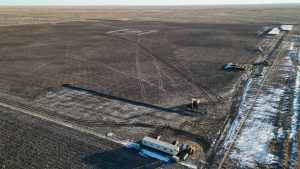Work is underway on the largest project in northern Ontario to build 1,800 kilometres of electricity transmission and distribution infrastructure to connect 24 isolated First Nations communities.
The $1.9 billion the Wataynikaneyap Transmission Project (Watay Project) will also eliminate diesel generators as a general source of local power, cutting the carbon footprint substantially, not to mention the more than $43 million spent annually on fuel. As fuel prices rise over the 40-year lifecycle, consultants PwC projected more than $1.3 billion in savings in diesel.
It’s more than just power; it’s also empowerment for the isolated communities and opens the door for better housing, more employment and business opportunities.
Some 769 jobs are being generated during construction but more importantly, says Margaret Kenequanash, CEO of Wataynikaneyap Power, Indigenous people are learning valuable skills which will allow them to find similar work once the lines are completed in 2023.
“The contractor intends to take advantage of all the season because the frozen ground, for example, helps with transportation of equipment on the winter road network and also in terms of environmentally sensitive areas you can take advantage without disturbing areas,” says Tim Lavoie, vice president, corporate services and Indigenous relations at Fortis Ontario, one of the partners.
The network will tap into Hydro One and draw from the grid generally with no specific generating source identified, say Lavoie.
“It will connect from Pickle Lake and Red Lake and then go north from there,” he says. Pickle Lake is about 500 kilometres north of Thunder Bay, bills itself as being “at the end of the road” on Highway 599 and says it’s the “last frontier” and a jumping off point for fly in fishing and other wilderness activities.
In all there are some $900 million in socio-economic benefits as well as the hype that with reliable power, businesses might be able to locate in the region and bring more needed jobs.
Wataynikaneyap Power is jointly owned by 24 First Nations communities and Fortis Ontario a management company and electric utility which also owns and operates Canadian Niagara Power Inc., Cornwall Street Railway Light & Power Company Ltd. and Algoma Power Inc. Fortis (TSX:FTS) also owns 3,439 km of distribution and power lines. There are other investors also.
The Watay Project, as it’s also known, consists of transmission of 25 kilovolt to 230 kilovolt power through 22 substations. While some communities have electricity line supply, it’s often only 115 volts and unreliable. It has limited draw and many communities’ members have to ration or share power while those on diesel generators can only draw power during operating times and fuel has to be shipped in, adding to the cost.
Work will accelerate when the weather breaks, Kenequanash says, with more site preparation and logistics such as modular offices and living quarters for camps along the route.
The project is an extension of an earlier 117 kilometre powerline connected at Red Lake in 2018, she says, but much more ambitious in scope.
It will use steel towers flown in via helicopter and dropped onto pads built on helical piles, though some of the towers will be constructed from timber for environmental reasons.
“Timelines obviously will be dependent on how much work we can get done with the weather, between winds and storms,” she says. “And we’ve had training programs in place to get a workforce ready, not just Indigenous people but all members of the communities.”
She said the basic training includes health and safety, working with power and other essentials and it’s a good foundation and experience which should help get those qualified workers on track for future construction jobs in the North.
With the Ring of Fire road announced recently by the Ontario government that area of Northern Ontario could see a lot of construction work over the next decade and that opens up a lot of opportunities for jobs.
There are many challenges ahead, says Lavoie, including communications because while the communities have local cell service there are vast areas without coverage so satellite phones will be needed.
It’s also a health and safety concern with workers in remote areas who might get injured or encounter issues like bears or other local hazards.
“They will all be wearing personal devices to track where they are and if they are moving,” says Kenequanash.











Recent Comments
comments for this post are closed